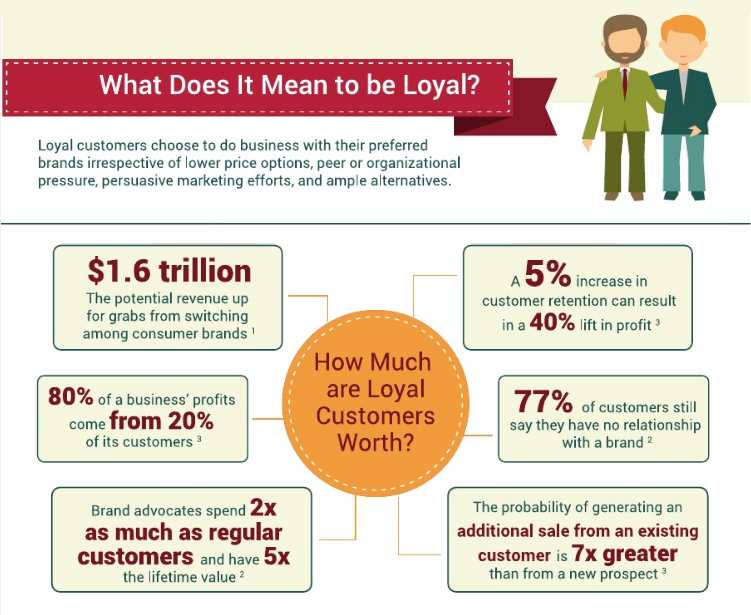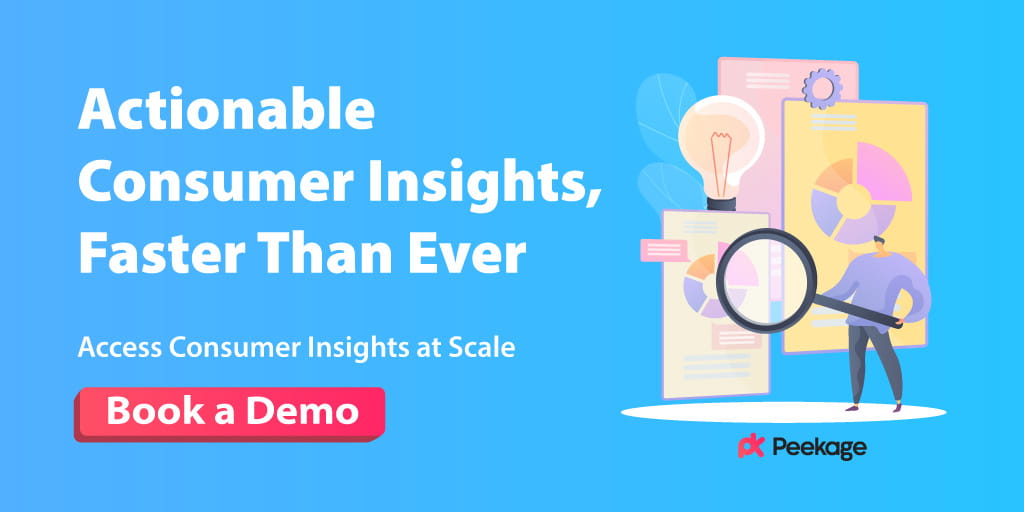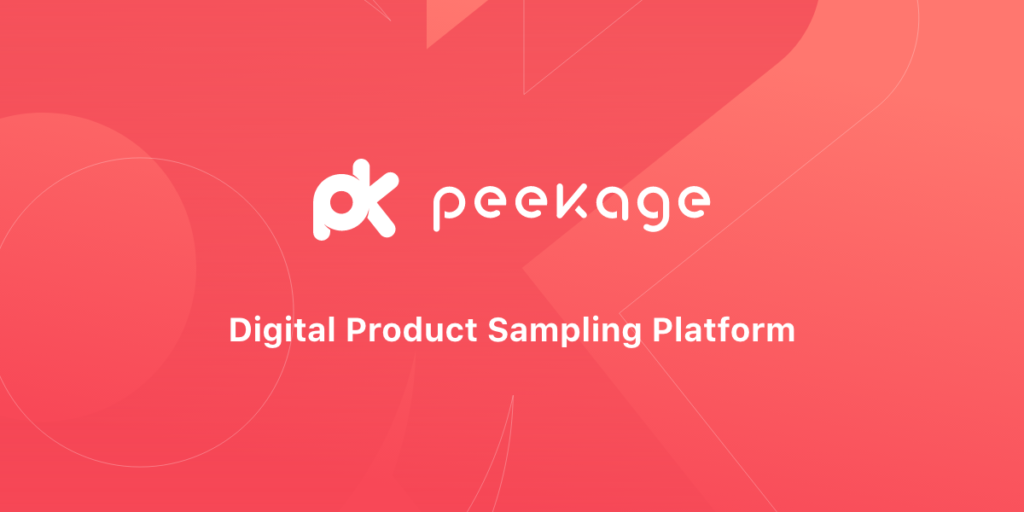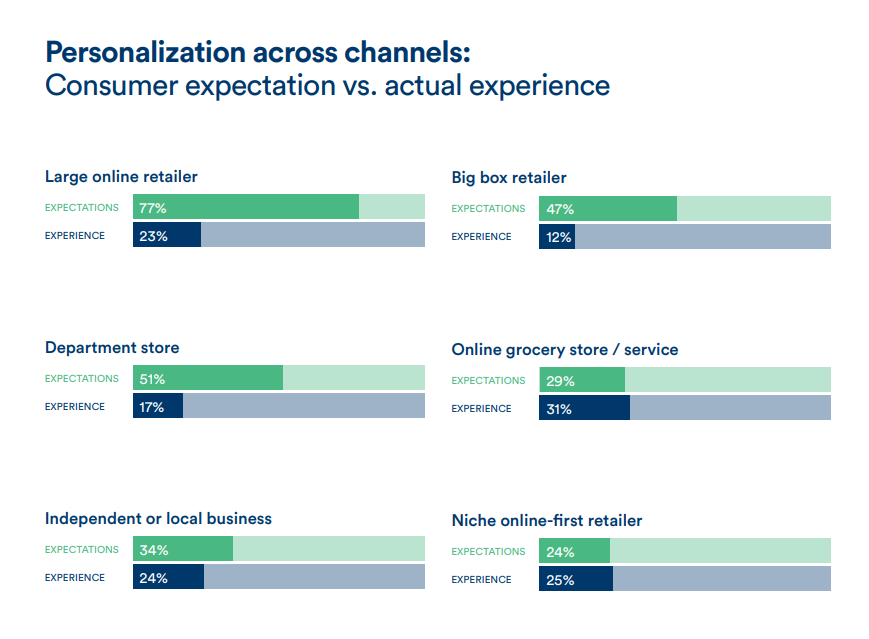Customer loyalty equals profit in the business world. Often times, a company's most devoted customers are also its most profitable.
The longer a customer stays with a company, the less costly it is to serve them. Furthermore, loyal customers are the ones who buy more, pay premium prices, and refer new customers.
As a result, nearly 80% of marketers implement loyalty program strategies that specifically target customer loyalty. If your company doesn't have a clear customer loyalty program strategy, you're probably passing up a lot of opportunities for business growth.
That is why, in this article, we will define customer loyalty program strategies, explain how they work, the psychology behind them, and what they require to be successful.
Then, to help you make the most of your resources, we provide a step-by-step guide to developing and optimizing a customer loyalty program and analyzing its costs and performance.
Finally, we'll conclude by talking about whether rewards alone can build customer loyalty.

What Exactly Is a Loyalty Program Strategy and How Does It Work?
A customer loyalty program is a marketing strategy that encourages positive customer behaviors through rewards in order to increase customer shopping frequency and volume.
A customer loyalty program, when done correctly, can be a valuable tool for increasing sales and profits by increasing customer retention, lowering marketing costs, and creating a passionate community of brand advocates.
To learn more about customer loyalty programs and their different types, please read: The Definitive Guide to Customer Loyalty Programs: Definition, Benefits, Types, Strategy, Cost & Examples

Rewards
Loyalty programs use both transactional and experiential rewards to encourage customers to buy more from the company.
- Transactional rewards are intended to improve your product or service's price-to-value ratio by providing better deals in exchange for more frequent purchases. Discounts, cashback deals, and giftcards are just some of the transactional rewards available.
- Experiential rewards, on the other hand, aim to improve a customer's experience with a brand by enhancing convenience, exclusivity, and customer service.
Read Also: Experiential Marketing: Taking Your Business to the Next Level
Principles of loyalty
In order for a customer loyalty program to work as a marketing strategy, it should be based on six important principles:
- Brand-friendliness: The whole program, its activities, and rewards should be an extension of the company's branding strategy and brand values.
- Reciprocity: The loyalty program should benefit both the customer and the company.
- Appeal: It should be attractive enough to compel the customers to take action.
- Habit formation: Customers should be rewarded for activities that they can do over and over again and that create positive value for the business, i.e., referring friends or making purchases.
- Exclusivity: The benefits that the loyalty program offers should be provided only to the program members and not all the customers.
- Convenience: The program should be easy to join and easy to use.
Strategies
Companies use various loyalty program strategies to keep customers engaged and compel them to take actions that benefit the business. Some of these strategies are:
- Offering redeemable points: Point-based programs are the most common methodology used for loyalty building and often offer transactional benefits to customers.
- Offering cashbacks: With this method, the customer is rebated a small percentage of their balance as credit that they can spend on their next purchase.
- Creating hierarchies: Customers are divided into tiers based on how much they've spent with the company and given benefits accordingly.
- Joining coalitions: a type of loyalty marketing in which two or more businesses join forces to serve each other's customers in a program.
- Providing paid premium services: A premium program is one that requires the members to pay an upfront fee for benefits that they can use right away.
- Gamification: A gamified loyalty program is more exciting and engaging for the members as it takes the form of a game.
- Community building: Value-based programs create meaningful connections with customers by providing them with a sense of community.
These strategies can be used separately or in combination to provide customers with more engaging and distinguished experiences.
The Psychology Behind Loyalty Program Strategies
Emotions are what drive our decisions, especially when it comes to selecting products or services from the market's plethora of options. Customer loyalty programs, like all marketing strategies, aim to influence customers' emotions in order for them to take actions that are profitable for the company.
Let's look at the psychological drives behind loyalty programs and how they influence customer decisions.
1. Positive reinforcement for habit formation
Positive reinforcement occurs when we reward someone for taking an action that results in a favorable outcome. This learning process encourages the person to repeat those actions in order to continue receiving rewards.
Loyalty programs use this psychological mechanism to influence customer behavior and instill habits that benefit the company, such as purchasing more or referring friends.
2. Effort heuristic and the intrinsic value of effort
According to the "effort heuristic" theory, the more effort we put into something, the more we value it. Furthermore, we value our own efforts far more than those of others. In a loyalty program, customers can form attachments to their rewards because of the effort they've made to earn them. That is why rewards, even if they have little to no monetary value, can be meaningful to customers.
3. Exclusivity, status, and having an edge over others
People enjoy having an advantage over their peers. Receiving better, more exclusive perks and benefits than others can instill in customers a sense of elevated social status and accomplishment.
If you can create an appealing "elite" status for your customers, it gives them something to strive for and motivates them to go the extra mile. That is why a well-known brand, such as Sephora, gives their top-tier, most loyal customers first access to special offers, such as new or limited-edition products.
Video: Seth Godin | Understanding Exclusivity and Status is Critical to Marketing
4. Commitment through artificial progress
People are more likely to achieve their objectives if they believe they are making progress toward them. This is referred to as the "endowed progress effect." This theory is the reason why many successful loyalty programs offer customers welcome bonuses as soon as they sign up.
5. Pain over pleasure
For a long time, marketers have encouraged customers to buy more by incorporating scarcity and urgency into their offers. Loss aversion theory explains why these tactics work so well: It is because the psychological pain of losing something is twice as strong as the pleasure of gaining the same thing. Customers hate missing out on good deals, gifts, or experiences and are more likely to take action if they feel like they're losing an opportunity.
6. Motivation through anticipation
According to the Goal Gradient Effect, as people get closer to a reward, their behavior speeds up to get there faster. In other words, people are motivated by how close they are to a goal, rather than how far they've come. Customers will increase their purchases in loyalty programs when they see that a goal, such as unlocking a new tier or receiving a gift, is within their grasp.
On the other hand, customers may become discouraged if the goals you set seem unattainable to them. This is why many successful loyalty programs continually remind their customers of how close they are to receiving their next reward.

7 Steps to Creating an Effective Loyalty Program Strategy
Now that we know what about a loyalty program drives customers to take action, let's see how we can put them to practice.
Although there is no one way to create a loyalty program, there are certain elements that are necessary for doing it successfully. Here are seven important steps you need to take to create an effective loyalty program that your customers will love.
Step 1: Think about your brand values
Creating a loyalty marketing program requires some high-level thinking before getting into the more technical aspects. Whatever loyalty marketing strategy you're designing, keep in mind that it should be part of a more comprehensive branding strategy.
Therefore, it's essential to have a clear idea of your brand values and the message you want to communicate through the program.
For example, does your brand value inclusivity and affordability, or is it one that offers exclusive, high-end services? What causes do you stand for? Ask yourself these questions until you find the direction you want the program to go in.
Also Read: Basics Of Brand Activation: What Is It, And Why Is It Important?
Step 2: Establish your goals
Clearly define what you want to accomplish with your loyalty program. Increasing sales is an obvious reason, but that can't be the only one. Do you want to offer a premium quality that differentiates you from the competition? Do you need to collect more data from your customers so you can offer more personalized services? Should your target audience test your new products? Your goals determine the activities that you reward through the program and often the kinds of incentives you're offering.
Step 3: Find out what your customers need
Once you've defined what you're looking to get from the customers via your loyalty program, you should find out what else your best customers need from your business.
The best way to do this is to simply ask them. In general, customers look for cash value, relevance, choice, aspirational value, and convenience in a loyalty program. Using consumer insights research, you can learn what your customers' values, habits, pain points, preferences, and expectations are.
What you offer them as incentives should address these elements and create a better experience for them. Ideally, you'd want to opt for more experiential rewards rather than transactional. Experiential rewards are more effective at creating senses of appereciation and community; two of the major contributors to customer loyalty.

Also read: Ultimate Guide to Consumer Research Types
Step 4: Make it free, paid, or both
One of the main points to decide is whether you base your loyalty marketing strategy on a free or paid program.
Free programs:
- A lower entry barrier as customers
- Customers don't pay extra for the benefits
- Customer expectations are lower
- Costs are paid for from your revenue
- Reward options are limited by budget
Paid programs:
- A higher entry barrier
- Customers need to pay first before receiving the benefits
- Price can limit the number of people that sign up
- Customers expect a higher quality of service and rewards
- The revenue from the paid program can pay for its expenses or even bring in an auxiliary stream of revenue for the company
- More freedom when deciding rewards options
A third option is to create free and paid tiers for your program. For example, you can offer free-tier members financial incentives like cashback for their purchases, while premium-tier members get unlimited free shipping and early access to sales.
Step 5: Define loyalty levels... or don't!
You can employ tiered or non-tiered programs. Tiered programs are more complex and require different incentives at each level. Meanwhile, they can keep the customers engaged as they are challenged to unlock new perks and benefits. They also offer more room for customization.
Non-tiered loyalty programs are simpler to design and easier for customers to understand. They get a basic deal when they join the program, and that stays consistent regardless of how much they interact with your company.
Step 6: Design your rewarding system
Based on your program's objectives and your customers' needs/pain points, define activities that will be rewarded.
Let's say you have a travel agency and you want more data on your customers' travel plans for the holidays so you can offer them personalized hotel deals. You can simply design a survey and reward people who complete it with discount codes that expire at the end of the holidays.
This is both a transactional and an experiential incentive; because it improves your customer's experience as they get more personalized offers while saving them money on holiday deals.
Step 7: Come up with a great name
Catchy, enticing, and unique. Your customer loyalty program's name should stand out from all your competitors' and invite customers to learn more about it.
Cosmetics brand Sephora's loyalty program, "Beauty Insider", is the perfect example. Even if you've never heard of Sephora, the word "beauty" gives away just enough for you to know what the program is about, and, at the same time, the word "Insider" creates that mysterious, exclusive vibe to make customers want to be a part of it.
Measuring the Success of a Loyalty Program Strategy
Now that we know how to create a customer loyalty program, we need metrics to measure its effectiveness. The following are the eight most important metrics for evaluating the performance of a customer loyalty strategy.
1. Customer Enrollment Rate (CER)
The number of customers who have signed up for your loyalty reward program is referred to as the customer enrollment rate. In other words, it is a metric that measures the rate of participation. We can easily calculate it by dividing the total number number of customers by the number of customers who have enrolled.
Formula: CER = total number number of customers / number of enrolled customers
2. Redemption Rate (RR)
Redemption rate is an important aspect of any loyalty program. It shows how frequently customers redeem points for discounts or other benefits.
If your redemption rate is low, you should reconsider your loyalty strategy (such as changing how points are earned and redeemed).
Formula: RR = number of points redeemed / number of points issued
3. Customer Retention Rate (CRR)
The ability of a company to keep customers over time is referred to as customer retention. Customer retention rate is a percentage-based metric that measures the number of customers retained at the end of a given time period.
Customer retention rate is arguably the most important metric for determining the success of your loyalty program. Because the primary goal of a loyalty program is to bring customers back, and CRR measures exactly that.
Formula: CRR = (Customers at the End of Period) - (New Customers Acquired) / (Customers at the Beginning of Period) x 100
4. Negative Churn:
When the amount of new revenue generated by existing customers exceeds the amount lost due to cancellations and downgrades, this is referred to as negative churn.
Negative churn rate indicates whether your loyalty program has persuaded your existing customers to increase their purchase volume and frequency.
Formula: Negative churn = (churned revenue at the end of the current period - Expansion revenue at the end of the current period ) / Total revenue at the end of the previous period
5. Net Promoter Score
Net Promoter Score (NPS) is a metric for measuring customer loyalty and satisfaction that is calculated by asking customers on a scale of 0 to 10 how likely they are to recommend your product or service to others.
An increase in NPS indicates that your loyalty program was successful in developing a positive relationship with your customers, who are now more likely to act as brand advocates, promote word of mouth, and generate a positive growth cycle.
Formula: NPS = (number of promoters - number of detractors) / (number of responses) x 100
6. Customer Effort Score
Customer Effort Score (CES) is a single-item metric that measures how easy or difficult it is for a customer to resolve an issue, fulfill a request, purchase/return a product, or get a question answered.
In the case of a loyalty program, CES demonstrates how easy it is for your customers to join and use your program. Naturally, the less work your program requires of your customers, the more likely they are to participate.
Formula: CES = (Sum of all ratings) / (Total number of responses)
7. Repeat Purchase Rate (RPR)
The percentage of customers who return to make another purchase is known as repeat purchase rate. It's especially important for assessing your overall customer experience and determining how much value your loyalty program provides to your customers.
Formula: RPR = (number of repeat customers) / (number of total customers) x 100
8. Social Media Response
Social media is an excellent resource for learning how customers perceive your program. Using social listening techniques, you can learn whether people are interested in your loyalty program, what is working, and what needs to be changed.
Also Read: Partnering Social Media Marketing with Product Sampling
How Much Does a Loyalty Program Cost?
It is critical for the success of a loyalty program to keep costs as low as possible. Many businesses use strategies that cost them more money than they gain from increased sales and profits. This is why so many programs fail.
It can be difficult to calculate the cost of a loyalty program because there are many unknown factors before the system is designed. However, you can have a rough idea of how much a loyalty program will cost your company.
Several factors must be considered. But first, you must determine your development strategy.
There are three approaches to developing a customer loyalty program:
- In-house development: This method of development gives you the greatest amount of control and freedom over the process. You will, however, need to have the resources to design and implement all the aspects of the program.
- Outsourcing: Outsourcing your loyalty program to an experienced third-party company can save you time and manpower. However, it is often prohibitively expensive for the majority of small businesses.
- Loyalty program software: You can use pre-made loyalty program software. These software solutions provide limited customization but are significantly cheaper, faster, and easier to implement than previous options.
Options A and B are typically used in larger organizations, whereas Option C is best suited to small businesses and startups with limited financial and human resources.
You can estimate the cost of each component of your customer loyalty program once you've decided on a development strategy.
Customer loyalty program costs are divided into two categories:
a) Research, development, and maintenance: These costs are relatively predictable over the course of a loyalty program's life cycle. They are the result of:
- Research: Customer surveys and interviews
- Human resources: development team, management, and customer service.
- Technology: software and hardware requirements
- Marketing: paid advertisements, content creation, email marketing, and social media campaigns
These components are required to set up and run a long-term customer loyalty program.
b) Incentive costs: These costs vary greatly depending on the number of people who join your loyalty program and the types of rewards you offer.
- Transactional: Redeemable points, discounts, cashbacks, referral bonuses, special offers, giveaways, free samples, and gifts.
- Experiential: Additional members-only benefits, such as free shipping, games, contests, and events.
Optimizing the Cost of Your Customer Loyalty Strategy
To ensure that your customer loyalty program is profitable, you need to make the most of your resources. To that end, you should incorporate a continuous optimization cycle into your customer loyalty program strategy. Here are four ways you can make your customer loyalty plan more cost-effective.
a) Do your research
Any successful strategy must be supported by research. In the case of a customer loyalty program, you need to know what your best customers expect from you and how you can provide it.
Continuous and effective consumer insight research reduces trial and error by demonstrating what your priorities should be and how to meet them; thereby reducing your expenses.
Consumer insight research made easy:
Offering new product samples is a great way to gain feedback from your customers and incite their loyalty. You first need to know what your best customers want in order to provide it to them.
Peakage is a platform that helps you do just that. A Personalized product sampling platform allows consumer brands to conduct targeted at-home product trials. Our program sorts through 200+ shoppers' attributes and categorizes them based on their buying patterns and interests.

Peakage performs customized customer surveys and analytics on users who have tested your product or service. You will receive valuable feedback that will assist you in discovering actionable insights that can inform strategy, messaging, product positioning, and more.
If you want to kickstart your product testing campaign, book a free consultation with one of our experts.
b) Improve the technical side
Unless your company has hundreds of thousands of customers, you don't need a top-of-the-line, all-in-one, comprehensive system to run your loyalty program. There are numerous API-based, low-cost software solutions that are simple to integrate with your existing systems. These solutions are not only less expensive, but also easier to manage because you don't have to worry about the backend.
You can also reduce program costs by using Progressive Web Apps (PWA) instead of running individual native apps on iOS, Android, and web.
Another thing you can do is get rid of old, unnecessary customer data to save money on data storage.
c) Personalize
You may believe that a low response from a larger audience will result in more traffic than a high response from a smaller audience. So you might consider sending your offers in bulk to all of your customer segments. Unfortunately, it will only turn off most of your customers because your marketing messages and offers don't apply to them.
Loyalty programs provide numerous opportunities for personalization because they provide you with access to your customers' location, preferences, payment methods, previous purchases, and other useful data. Personalize your offers based on customer data to make the most of your marketing expenses and increase conversion.

d) Collaborate
Join forces with other companies whose missions are similar to yours.
This not only divides the cost of loyalty program development and maintenance for each individual company, but also gives customers more flexibility and choice in redeeming their points.
Another reason is that each affiliated company is promoted to the customer bases of other member companies.
Bonus: Do rewards really create loyalty?
Customer loyalty is first and foremost determined by the quality of your product or service. A rewards program can only be the icing on the cake, not the cake itself.
Also, for rewards to be effective at building loyalty, your customers must find actual value in them. In other words, it is the increased value that you provide, not the rewards, that creates loyal customers.
Even the best rewards programs can't bring back customers who are unsatisfied with your product or service. So make sure that your main customer loyalty strategy is based on the quality and value you're offering, not just rewards.
Final words: Customize the Strategy for Your Business
Relevance is key for any marketing strategy, and a loyalty program is no exception. While it's great to use the best loyalty programs in the marketplace as a source of inspiration, it's important to customize your program to serve your customers and your business goals.
When done right, a customer loyalty program can be highly effective at increasing customer retention, increasing sales and profits, and promoting your business. So, take advantage of this strategy to keep your best customers coming back to your company.




